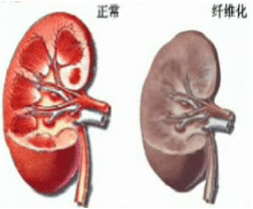Sci. Transl. Med:microRNA-21可促进肾脏纤维化
2012-07-05 liuchun 生物谷
2月15日,Science Translational Medicine在线发表了华盛顿大学、达纳法伯癌症研究所等处研究人员的研究成果,研究发现microRNA-21可通过沉默代谢途径促进肾脏纤维化。 肾脏结痂是一个较为普遍的公众健康问题,因为肾脏功能将随之丢失。为研究microRNA在肾脏受损伤后结痂过程中的作用,研究人员调查了两种纤维化肾脏小鼠模型中miRNA的表达情况,鉴定出24种上调的m

2月15日,Science Translational Medicine在线发表了华盛顿大学、达纳法伯癌症研究所等处研究人员的研究成果,研究发现microRNA-21可通过沉默代谢途径促进肾脏纤维化。
肾脏结痂是一个较为普遍的公众健康问题,因为肾脏功能将随之丢失。为研究microRNA在肾脏受损伤后结痂过程中的作用,研究人员调查了两种纤维化肾脏小鼠模型中miRNA的表达情况,鉴定出24种上调的miRNA。其中,miRNA-21在动物模型和肾移植病人中都显著上调。
在小鼠中敲除miRNA-21不会导致明显的缺陷,然而,miR-21-/-小鼠在肾脏损伤后很少会发生纤维化。同样的现象发生在用anti-miR-21寡核苷酸处理之后的野生型小鼠。miR-21-/-小鼠中miRNA-21的靶mRNA也可检测到。
敲除miRNA-21后,分析有关代谢途径中上调的基因表达谱,其中包括脂类代谢途径。脂类代谢途径受Pparα(peroxisome proliferator-activated receptor-α)调节,而Pparα是miRNA-21直接作用的靶点。过表达Pparα能够防止输尿管阻断所导致的损伤和纤维化。而Pparα缺失后,anti-miR-21寡核苷酸将不能发挥其抗纤维化的功能。
miRNA-21也可调节氧化还原代谢途径,线粒体中氧自由基的抑制剂Mpv171可被mi-RNA21抑制。
研究表明,mi-RNA21在两种小鼠模型中都可促进肾脏的纤维化和上皮细胞的损伤,因此可作为抗纤维化治疗的靶点。

doi:10.1126/scitranslmed.3003205
PMC:
PMID:
MicroRNA-21 Promotes Fibrosis of the Kidney by Silencing Metabolic Pathways
B. Nelson Chau1,*, Cuiyan Xin2, Jochen Hartner3,4, Shuyu Ren2, Ana P. Castano4, Geoffrey Linn2, Jian Li1, Phong T. Tran1, Vivek Kaimal1, Xinqiang Huang1, Aaron N. Chang1, Shenyang Li5, Aarti Kalra6, Monica Grafals7,8, Didier Portilla5, Deidre A. MacKenna1, Stuart H. Orkin3,4 and Jeremy S. Duffield2,*
Scarring of the kidney is a major public health concern, directly promoting loss of kidney function. To understand the role of microRNA (miRNA) in the progression of kidney scarring in response to injury, we investigated changes in miRNA expression in two kidney fibrosis models and identified 24 commonly up-regulated miRNAs. Among them, miR-21 was highly elevated in both animal models and in human transplanted kidneys with nephropathy. Deletion of miR-21 in mice resulted in no overt abnormality. However, miR-21?/? mice suffered far less interstitial fibrosis in response to kidney injury, a phenotype duplicated in wild-type mice treated with anti–miR-21 oligonucleotides. Global derepression of miR-21 target mRNAs was readily detectable in miR-21?/? kidneys after injury. Analysis of gene expression profiles up-regulated in the absence of miR-21 identified groups of genes involved in metabolic pathways, including the lipid metabolism pathway regulated by peroxisome proliferator–activated receptor-α (Pparα), a direct miR-21 target. Overexpression of Pparα prevented ureteral obstruction–induced injury and fibrosis. Pparα deficiency abrogated the antifibrotic effect of anti–miR-21 oligonucleotides. miR-21 also regulated the redox metabolic pathway. The mitochondrial inhibitor of reactive oxygen species generation Mpv17l was repressed by miR-21, correlating closely with enhanced oxidative kidney damage. These studies demonstrate that miR-21 contributes to fibrogenesis and epithelial injury in the kidney in two mouse models and is a candidate target for antifibrotic therapies.
作者:liuchun
版权声明:
本网站所有注明“来源:梅斯医学”或“来源:MedSci原创”的文字、图片和音视频资料,版权均属于梅斯医学所有。非经授权,任何媒体、网站或个人不得转载,授权转载时须注明“来源:梅斯医学”。其它来源的文章系转载文章,本网所有转载文章系出于传递更多信息之目的,转载内容不代表本站立场。不希望被转载的媒体或个人可与我们联系,我们将立即进行删除处理。
在此留言





#CRO#
45
#TRA#
44
#Transl.#
44
#Transl#
43
#Micro#
32